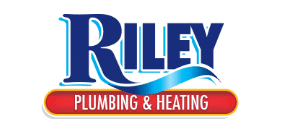
The Importance of Sump Pump Maintenance
Rain or snow, there’s one appliance that needs constant maintenance, and that’s your sump pump. Hidden in your basement, it’s easy to forget about the appliance that keeps your basement dry and flood free. A poorly maintained sump pump, however, could mean thousands of dollars in water damage. No homeowner wants to deal with a soggy basement, and luckily you don’t have to.
Knowing the Warning Signs
A good place to start is to know when something is wrong with your sump pump. Your home’s plumbing equipment is complicated, and your pump has many parts that are susceptible to damage. There are several reasons as to why your sump pump isn’t working the way it should be, if at all. The good news is that there are plenty of warning signs as well. If you suspect something is wrong with your sump pump, here are a few signs to watch for.
- Strange noises. A low hum is a normal sound, but if you start hearing any screeching, squealing, or grinding, there could be a mechanical problem with the pump. Loud rattling or grinding usually indicates a jammed or damaged impeller. If you think the loud noises are coming from your sump pump, a plumber can help determine what the problem is.
- It won’t turn on. If the sump pump doesn’t seem to be turning on, it could be an issue with the float switch. If it’s a tethered switch, it could simply be stuck, preventing the pump from sensing when it’s full of water. If repairing or replacing the float switch doesn’t solve the problem, it could be time to replace your sump pump.
- The pump runs constantly. If it seems like your sump pump is cycling constantly, it could be a problem of size. The wrong sized pump means it’s constantly overwhelmed with water, and not fit to keep your basement dry. Depending on how much rain you receive throughout the year, you may need to upgrade your current sump pump. Battery backup sump pumps are also available in case of a power outage, and in some rare instances, you might want to install an additional pump.
- Foul odors. One of the clearest signs of a damaged sump pump is if you start to smell foul odors coming out of your basement. Funky smells in your basement usually indicates that there’s stagnant water inside the tank, and the pump isn’t functioning properly.
- Excessive vibrating. Occasionally your system will suck in hard debris which can dent the impeller fan. The impeller works like a propeller, sucking in any excess water. A damaged impeller causes the entire sump pump to vibrate, and will need to be replaced entirely.
- Visible rust. Naturally rust can happen when an appliance is working with running water, but it’s problematic if you start seeing visible rust on your sump pump. Rust can either be from a corroded battery or bacteria that can be harmful for your health and clog your plumbing.
How to Maintain Your Sump Pump
Properly maintaining your sump pump involves more than fixing a problem whenever one comes up. In fact, most problems can be easily avoided with some simple maintenance. No homeowner wants to deal with a busted sump pump, and luckily you don’t have to. Here are a few easy tasks you can do to keep your pump working properly.
- Clean the sump pump. It’s important to clean your pump at least every 3-4 months, to keep it clear of obstructive debris that can clog your plumbing or damage the pump. A vinegar solution can be run through the system to clear out any dirt or debris.
- Check the float switch. The float switch is an important component to your system as it senses when the tank is full and needs to empty the tank. Check the float switch and make sure it’s not restricted in any way.
- Check the discharge line. Another important component is the discharge line, which relocates water away from the basement and foundation of your home. Make sure to keep your discharge line clear and covered, as it can get clogged with debris or freeze in the winter season.
- Test the sump pump. An easy way to ensure your pump is functional is to periodically test it. Simply dump a bucket of water into the sump until the float switch rises, and wait for it to turn on.
- Check the power cord. Your pump relies on electricity to function, so it’s important to make sure it’s plugged in properly. If the power cord looks damaged, replace it immediately.
How Riley Can Help Your Sump Pump
When you choose Riley Plumbing for your installation, maintenance, and repair, you’re choosing a plumbing partner who will work with you to proactively provide the best care for your property. Regardless of whether you’re a first-time homeowner with a newly constructed home or the spokesperson for a condo management board that needs to upgrade its basement waterproofing, our professionals are always looking out for your best interest. Benefits of our services include:
- Full waterproofing of your property’s basement
- Prevention of mold and mildew growth that could damage your home and pose a health hazard
- Adds value to your property
- A reduced risk of electrical fires that can result from flooding
- Top-rated plumbing work and customer service!
To prepare your sump pump for the next storm, call Riley Plumbing today!


Leave a Comment
(0 Comments)